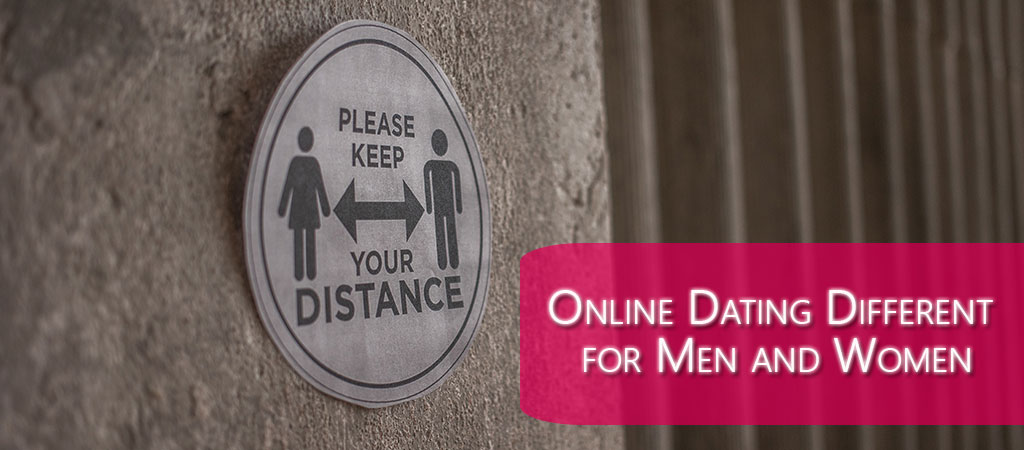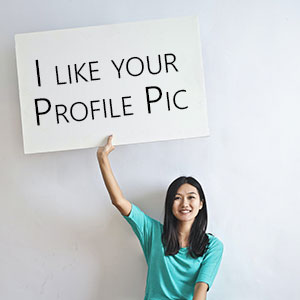Online dating is popular for finding love, companionship, or just for fun. It refers to using internet-based platforms to meet and interact with potential romantic partners, such as dating apps or niche sites. Over 30% of Americans date online, and younger people do it more than older people. Online dating began in the mid-1960s when Harvard students created “Operation Match” to match students using computer algorithms. Online dating is a multibillion-dollar industry. It has totally changed the medium people meet and date.

This article examines how men and women approach online dating, from profile creation to communication. The article gives a complete picture of online dating by examining the unique challenges and opportunities each gender faces. Whether you’re a seasoned online dater or simply curious, this article offers valuable insights and information.
Table of Contents
Gender Differences in Online Dating
Online dating has become a very popular medium for people of all genders. It helps them meet the people they might want to date. However, men and women approach these platforms differently. Women tend to prioritize intelligence, ambition, and financial stability in potential partners, while men place more emphasis on physical attractiveness. Women are also more cautious about safety and privacy concerns on these platforms, while men are more willing to take risks. Cultural factors like gender roles and social norms can affect these differences. However, age, sexual orientation, and culture influence online dating behavior. We can create more inclusive and equitable online dating platforms for all users by understanding these differences and their cultural and societal roots.
Gender Differences in Profile Creation
A user’s online dating profile greatly affects whether a potential partner contacts them. Research shows that men and women create profiles differently. Women tend to put in more effort, with a focus on self-presentation and self-promotion—carefully choosing their profile picture, crafting a compelling bio, and highlighting their interests and hobbies. Men, on the other hand, often prioritize physical attractiveness and characteristics over personal interests and traits. We need to follow certain dating formats.

Men may feel pressure to be masculine and women to be beautiful. These differences can also affect online dating success, with women getting more messages and men getting fewer.
Overall, recognizing and understanding these gender differences in profile creation can lead to more inclusive and equitable online dating platforms where users have an equal opportunity to connect with potential partners based on shared interests, values, and goals.
Gender Differences in Attraction
Men and women approach attraction differently in online dating. Men tend to prioritize physical attractiveness in potential partners, while women consider a wider range of factors, including personality, interests, and social status. This difference can be influenced by evolutionary psychology and cultural norms regarding beauty and desirability.
In terms of pursuing potential partners online, men are more likely to initiate contact with many potential partners, while women tend to be more cautious and selective. Women tend to receive more messages and attention from potential partners overall, but men may still have an advantage in initiating contact.
Gender differences in online dating and attraction are complicated. We can create more inclusive and equitable online dating platforms that allow all users to connect with potential partners based on their shared interests, values, and goals by acknowledging these differences.
Gender Differences in Communication
In online dating, communication plays a crucial role in building connections with potential partners. Communication styles differ between men and women.
Research shows that men are more likely to start conversations than women are. Men also tend to use more direct and assertive language, while women use more tentative and polite language. These differences can be influenced by gender roles and socialization.
It’s important to note that these differences are not absolute and individual personality and cultural background can also affect communication style. However, gender differences in communication can impact how potential partners are perceived, with assertive men seen as confident and dominant and assertive women viewed negatively.
Recognizing and respecting these gender differences can lead to more successful online dating experiences. Platforms can also create more inclusive communication environments that allow all users to express themselves authentically and connect with potential partners based on shared interests and values.
Gender Differences in Initial Contact
In online dating, initiating contact with potential partners can be challenging. According to research, men make the first move while women wait for them. However, not all men or women fit into these gendered patterns of behavior, and individual personalities and cultural backgrounds can also influence how people approach initial contact.
Men are more likely to send generic, copy-and-paste messages, while women are more likely to personalize and reference the recipient’s profile in their initial messages.
Understanding gender differences in initial contact is important for successful online dating. Users can work to build stronger connections with potential partners based on shared interests and values by recognizing and respecting these differences. Online dating platforms can also strive to create inclusive and equitable environments that allow all users to express themselves authentically and connect with potential partners in meaningful ways, regardless of gender.
Gender Differences in Conversations
Online dating has changed the way people look for romantic partners, but gender differences in communication styles can make the experience different for men and women. Men tend to use direct and assertive language, while women use subtle hints and suggestions. Research has shown that women often receive more messages than men, making it hard for them to respond to everyone, while men have to initiate contact and are more likely to be ignored or rejected. Men talk more about themselves, while women ask more questions and show more interest in the other person. Sociocultural factors, such as gender norms, can also affect communication styles and create barriers to effective communication.
Overall, men and women should be aware of these communication styles and try to communicate respectfully and effectively. Understanding and respecting these differences can lead to more successful and meaningful connections in online dating.
Gender Differences in Meeting in Person
Internet dating has impacted romantic in-person meetings. Men and women handle in-person meetings differently after online communication. Men are more ready to meet, whereas women are more cautious and want to get to know someone first.
Research has found that men are more likely than women to ask for a face to face meeting first. More women are initiating contact and suggesting in-person meetings, changing this gap. Before meeting in person, women like to chat online and provide more personal details.
Sociocultural influences influence gender variations in people. Cultural norms and gender stereotypes affect how men and women date online and in person. Conventional gender roles may require males to lead romantic relationships and women to be more cautious. Women may be more cautious when meeting in person due to gender and social pressures. Men may want to show their manhood by initiating dates and contact.
Gender Differences in Safety Concerns
Internet dating is exciting yet risky. Online dating safety differs for men and women. Meeting in person makes women more cautious and apprehensive about their safety. Men worry about financial frauds and false profiles. Women are more likely to conceal personal information and undergo background checks when using dating services.
Women were more likely to Google search their dates or share their whereabouts with others, according to studies on online dating safety. Males may be more inclined to meet someone online without validating their identification.
Online dating safety may be influenced by sociocultural variables including gender norms and online dating views. Women may feel more pressure to protect themselves, while men may feel more pressure to take amorous risks. Men may be scammed by bogus profiles, while women may be harassed.
Impact of Online Dating on Traditional Gender Roles
Internet dating has changed dating and gender roles. Men were supposed to pursue romantic connections, while women were docile and receptive. Online dating has empowered women to start partnerships. Women may now establish profiles and message potential partners, giving them greater dating autonomy. Men and women now start and pursue relationships equally.
Online dating has contradictory effects on gender roles. According to several surveys, males still initiate contact and partnerships. Online dating affects gender roles due to sociocultural variables. In patriarchal settings, men can dominate online dating.
Internet dating’s gender role effects are complicated. It challenged gender roles, but whether it democratized dating is debatable. Online dating will affect gender roles based on cultural norms and personal preferences.
Benefits and Challenges for Men in Online Dating
Men benefit and suffer from online dating. The ability to choose from a bigger pool of potential companions increases their chances of finding a match. Internet dating lets men filter matches by age, geography, interests, and values.
Men must also compete with a vast pool of internet daters. Due to competition, men may struggle to find partners. Men’s profiles and first interactions may also reflect masculinity norms. According to the study, men are more inclined to lie in their profiles.
Social variables also affect men’s online dating experiences. Men’s expectations for online dating partners may be shaped by gender roles and dating and relationship norms.
Online dating offers pros and cons for men. It may give men more options and choices, but men may confront severe competition and pressure to conform to macho norms.
Benefits and Challenges for Women in Online Dating
Internet dating benefits and challenges women. It gives them additional options and lets them take their time getting to know possible mates before meeting. Women may also be harassed by men, pressured to comply, and required to filter potentially harmful people. Women receive more unwanted texts and feel objectified. Online dating might be affected by social perceptions of women as docile and accommodating.
Women can gain self-confidence and dating autonomy by overcoming these obstacles. Understanding women’s online dating issues is crucial to a great experience. While dating, women prioritize safety before looks. Gender roles and expectations affect women’s online dating experiences.
Online Dating and Gender Equality
Internet dating has affected gender equality, both positively and negatively. It can break down gender roles by connecting people based on interests and values rather than appearance or gender. This empowers women to date outside their social circles. Online dating can also be a secure space for gender exploration.
Online dating can reinforce gender stereotypes and inequities, according to a study. Men may feel pushed to initiate contact and pay for dates, while women may be harassed and objectified online. Online dating can also be affected by regional and cultural gender and sexuality standards.
Online dating and gender equality are complicated. It can promote gender inequality and allow for identity expression. Online dating’s effects on gender equality must be studied and a more inclusive dating culture must be created.
Online Dating and Intersectionality
Internet dating is popular, but it is difficult to determine its impact on a person’s intersecting identities and experiences. Intersectionality refers to how different identities and social categories such as race, gender, sexuality, and class, intersect and interact with each other. Online dating may reinforce biases and inequality, according to research. Black women may receive fewer answers and matches than white women. Harassment and discrimination may affect gender and sexuality minorities. Some dating apps are LGBTQ+-specific, while others let users filter matches by race or ethnicity, allowing marginalized groups to meet mates with comparable experiences and identities.
Gender and sexuality norms can also influence online dating. Economic and geographic considerations may also affect online dating technologies and resources. Online dating can give chances to excluded populations, yet intersecting identities and social categories can shape experiences and perpetuate disparities.
Implications for Online Dating Platforms
Understanding how men and women use online dating platforms might help platforms handle gender inequalities. Platforms should be gender-inclusive and eliminate harmful conduct. Gender-inclusive features should offer a variety of gender alternatives and preferred pronouns and allow non-binary users to opt out of binary gender preferences. Abuse reports and tougher profile verification should be adopted to protect high-risk users.
Online dating sites should also provide resources on healthy communication, consent, and safe in-person meetups. Partners in online harassment and abuse prevention can help people who need it.
AI-powered chatbots help online dating platforms reduce gender inequalities in initial contact and conversations.
Online dating platforms help make dating fair and inclusive for everyone. Safety, inclusivity, and good communication can improve online dating for all genders.
Implications for Society
Internet dating affects gender inequality. Online dating reinforces gender disparity by reflecting society’s gender norms and expectations. Society must acknowledge and challenge established gender roles, promote gender equality, and empower individuals to reject harmful gender conventions. Awareness campaigns on gendered expectations and online dating can also help. Be cognizant of your biases, challenge hurtful language and practices, and advocate for gender equality. Dating apps may promote inclusive and respectful environments and provide information. Organizations and policymakers can regulate dating apps, promote gender equality in design and marketing, and fund research to solve gender inequalities. Promoting inclusive and diverse representation, giving services for harassment and discrimination, and fostering conversations about gender norms are ways to address gender inequalities. These techniques can improve gender-neutral online dating experiences.
Conclusion
This article discusses gender differences in online dating and how to make it more inclusive and equitable. Men may face rejection and competition, while women have safety concerns and face gendered expectations. Online dating platforms can promote diversity and inclusion, educate users on healthy communication and consent, and create safer online spaces. Individuals must also take responsibility for their behavior and biases by using respectful language, being mindful of boundaries, and seeking diverse perspectives. While online dating has the potential to provide a diverse way for people to connect, it also presents risks. By recognizing and addressing gender differences, we can create a more enjoyable experience for everyone.



[…] Related: Why is Online Dating Different for Men and Women? […]
[…] Related Article – Why is Online Dating Different for Men and Women? […]
[…] complementarity is a recurring issue in masculinity and femininity studies. This idea holds that men and women need each other to complete […]